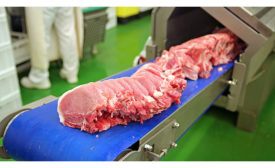ARTICLES
2021 Poultry Report: poultry prospers during the pandemic
Ground turkey and chicken dark meat do particularly well as consumers turn to dining at home.
Read More
Cover Story | Bacon Report
2020 Bacon Report: Bacon-buying bonanza
Boasting double-digit growth rates, bacon benefits from its convenience and variety as COVID-19 produces more at-home cooking opportunities.
Read More
Product Focus | Functional Ingredients
Functional Ingredients Promote Product Quality and Safety
Read MoreStay ahead of the curve. Unlock a dose of cutting-edge insights.
Receive our premium content directly to your inbox.
SIGN-UP TODAYCopyright ©2024. All Rights Reserved BNP Media.
Design, CMS, Hosting & Web Development :: ePublishing










